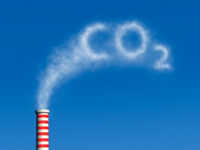 Renewable-energy capacity in the U.S. almost doubled from 2009 to 2012, helping reduce the nation’s carbon-dioxide emissions last year to the lowest since 1994, according to a Bloomberg New Energy Finance report.
Renewable-energy capacity in the U.S. almost doubled from 2009 to 2012, helping reduce the nation’s carbon-dioxide emissions last year to the lowest since 1994, according to a Bloomberg New Energy Finance report.
The cumulative installed solar, wind, geothermal and biomass-based energy sources in the U.S. climbed to 85.7 gigawatts in 2012, compared with 43.5 gigawatts in 2008, the London-based research company said in a report today.
Because the U.S. has reduced carbon emissions by 13 percent from a high of 6.02 gigatons in 2007, it’s gained credibility in global negotiations aimed at curbing climate change, Ethan Zindler, a New Energy Finance analyst based in Washington, said yesterday. Natural gas consumption increased as the use of coal and oil declined, according to the report.
“That has implications for the U.S. as it seeks to press other nations, namely China, to use energy more efficiently and lower its emissions,” Zindler said by e-mail.
U.S. energy consumption fell 6.4 percent from 2007 to 2012 as new, energy-efficient commercial buildings were built and older ones were retrofitted. There have also been “greater efforts from consumers to cut energy use,” including significant growth in sales of hybrid and electric vehicles, Zindler said.











